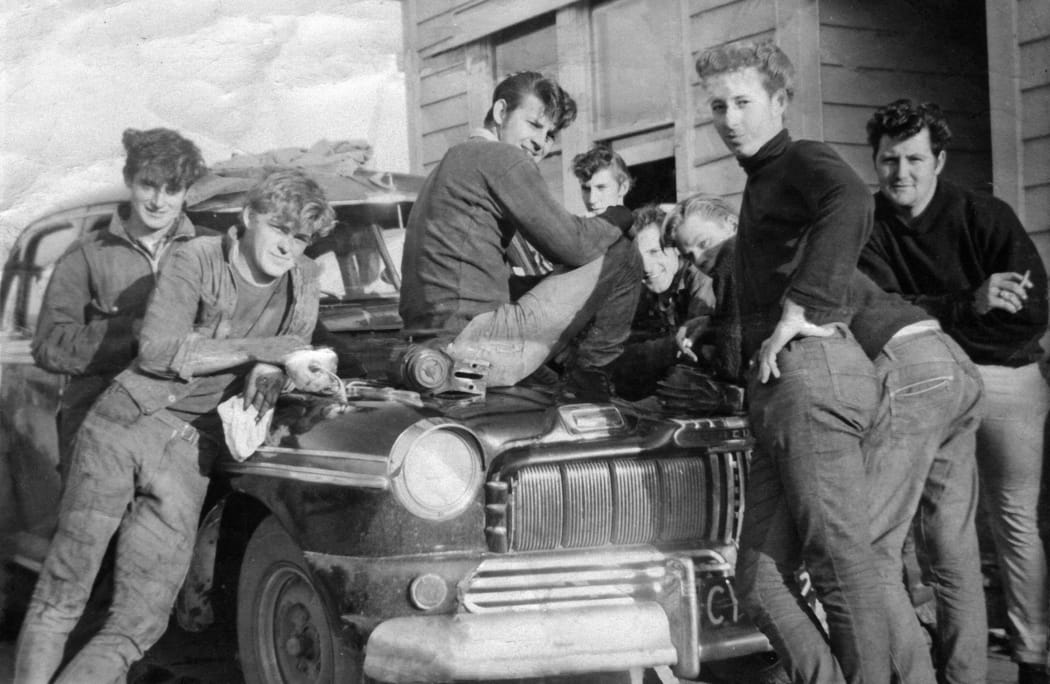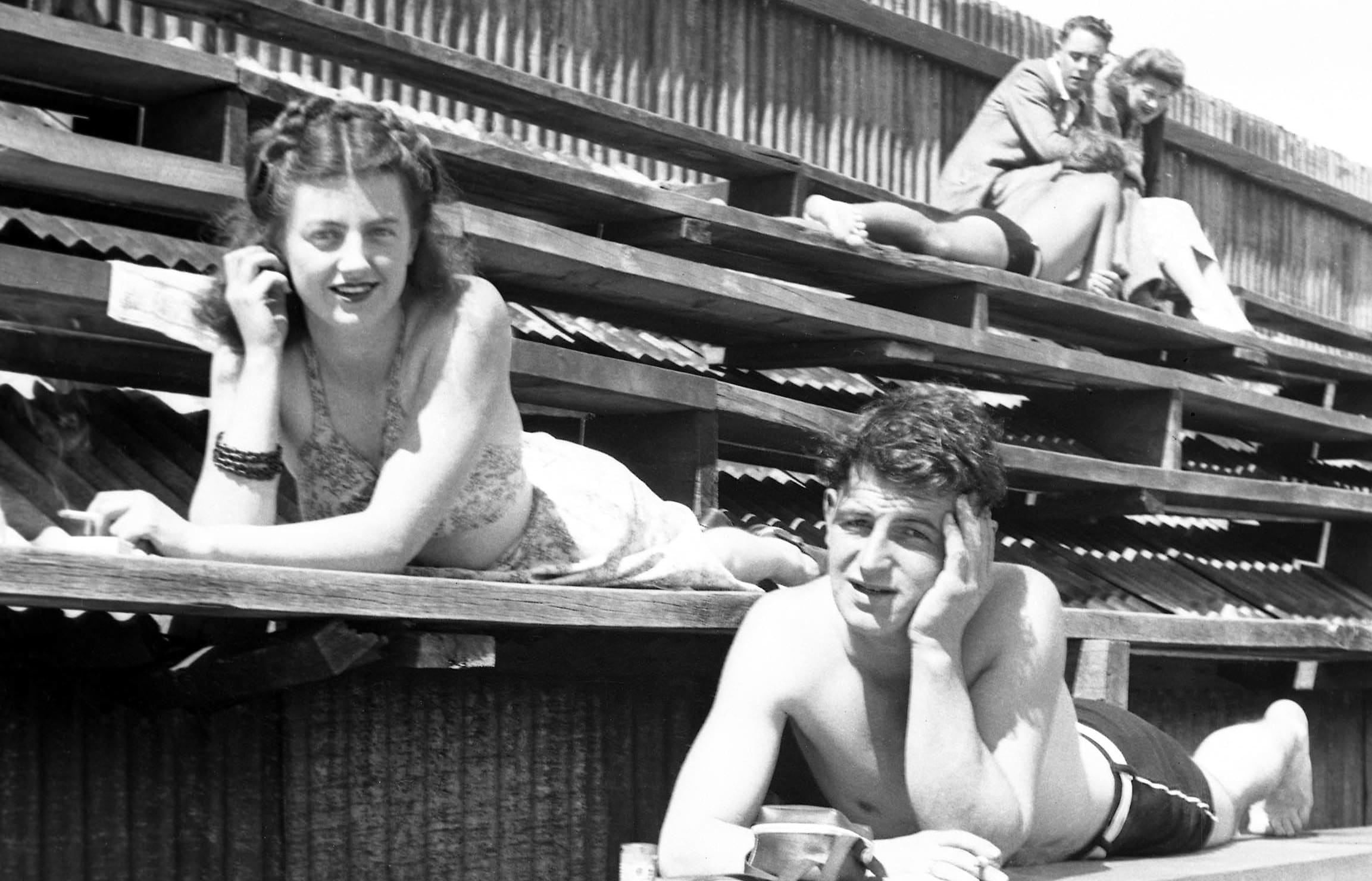In the 1880s, young urbanite New Zealand men borrowed a new well-dressed style from the streets of west London.
These were the 'mashers', a late 19th century type in a cast of youth characters that included 'flappers', 'dudes', and 'dudines'.

Young Aucklanders in the late 1940s. Photo: Supplied
University of Otago professor of gender studies Chris Brickell's book Teenagers: The Rise of Youth Culture in New Zealand explores the cultural history of young people between 1800 and the early 20th century.
From the 'masher', 'dude' and 'dudine' of the 19th century, to the 'flapper', 'bodgie' and 'widgie' of the 20th, Brickell's book looks at the rise and fall of domestic service, the impact of compulsory education, the movement of Pakeha and then Maori from country to city, the rise of consumer culture and popular psychology.
He said fashion and style underpinned our youth cultures.

Teens lounging on a South Island bleacher. Photo: Supplied
''The flapper was interesting because that style, the really distinctive 1920s flapper cloche hat and pillar box dress style sort of started out among girls and young women and then spread to older women, so by about 1930 if you look at a photograph of New Zealand women most of them look like the flapper.
''So that's a really interesting example of a kind of young person's culture disseminating through the wider society.''
Youth cultural influences from the United Kingdom and the United States were strong throughout the 19th and 20th centuries.
''There is this sort of idea that the teenager emerged in the 1950s. I think it's partly because the term teenager really started entering into circulation in the popular media but the idea of the teen 'age' is something that emerged in the 1910s and the idea of the teens of one's life being a significant period...I found examples of that in the 1840s.''

Milk bar 'cowboys'. Photo: Supplied
The gap between being a child and becoming an adult was not as strictly defined in the 19th century and early 20th century. Brickell said the rise of youth cultures was influenced by young people being put to work in factories in the 19th century, improvements in education, and an increase in secondary school rolls.
These changes created spaces in which young people were separated from adults and subcultures developed ideas, fashion, and style.
In New Zealand, there was a lot of contact in the early settlement years between Maori and Pakeha teenagers and then again after World War Two, when there was a mass influx of young Maori into urban areas.
Young people always embraced new technology, from the bicycle to the car, to the smartphone.
''Certainly the adult complaints about young people getting caught up in the excitements of the age, becoming over-excited, over-stimulated and breaking the rules - that goes back to at least the 1860s and in New Zealand probably back even further.
''Adults looking askance at young people, there's nothing new about that in itself even if the specific issues have shifted a bit.''

